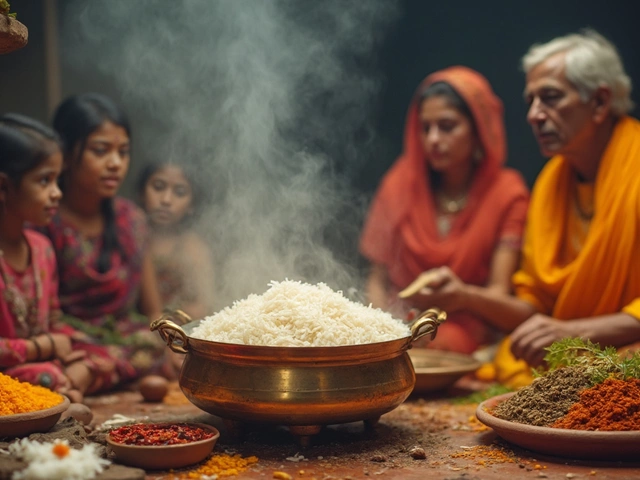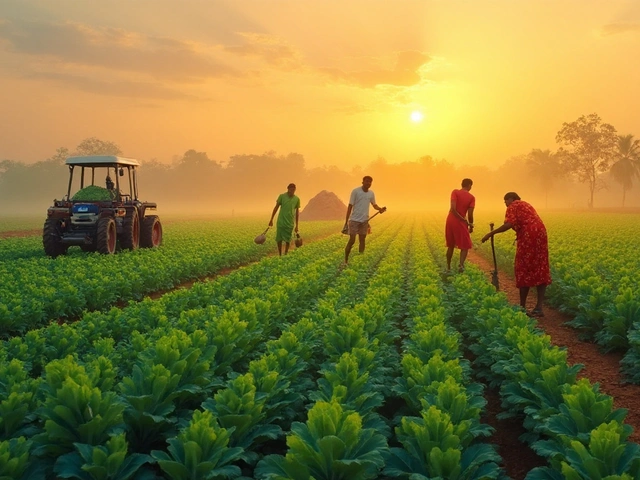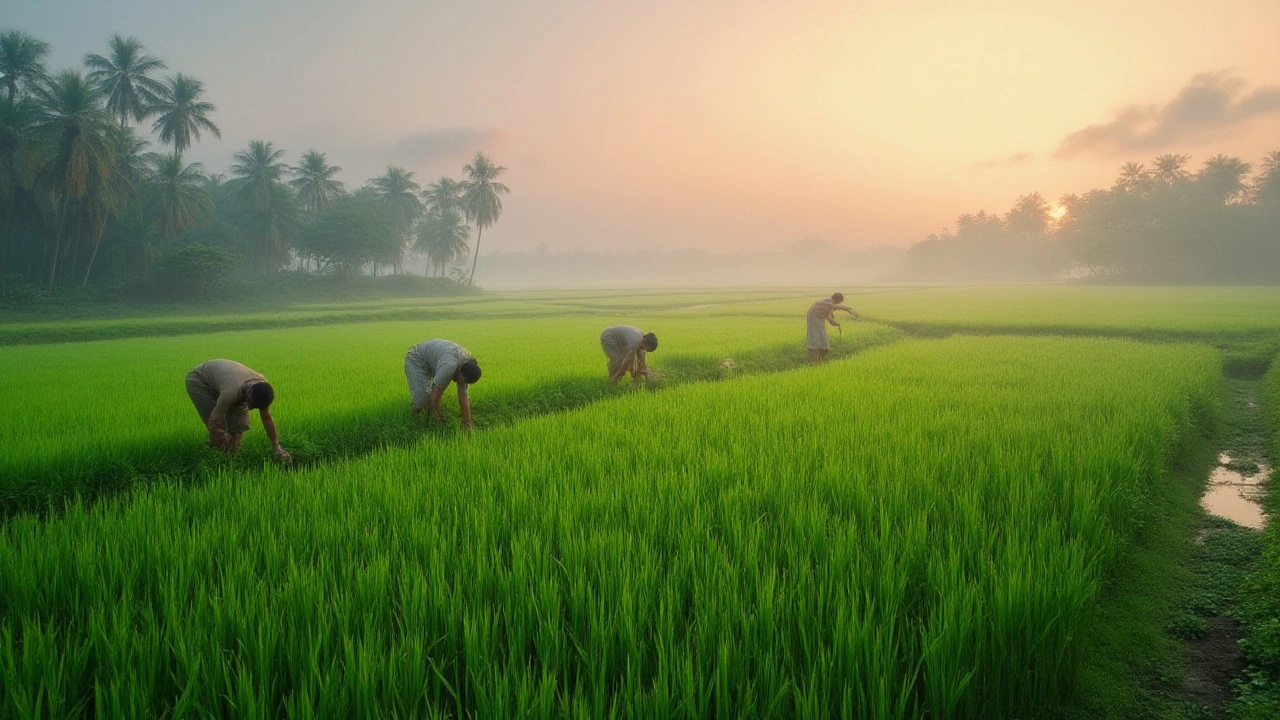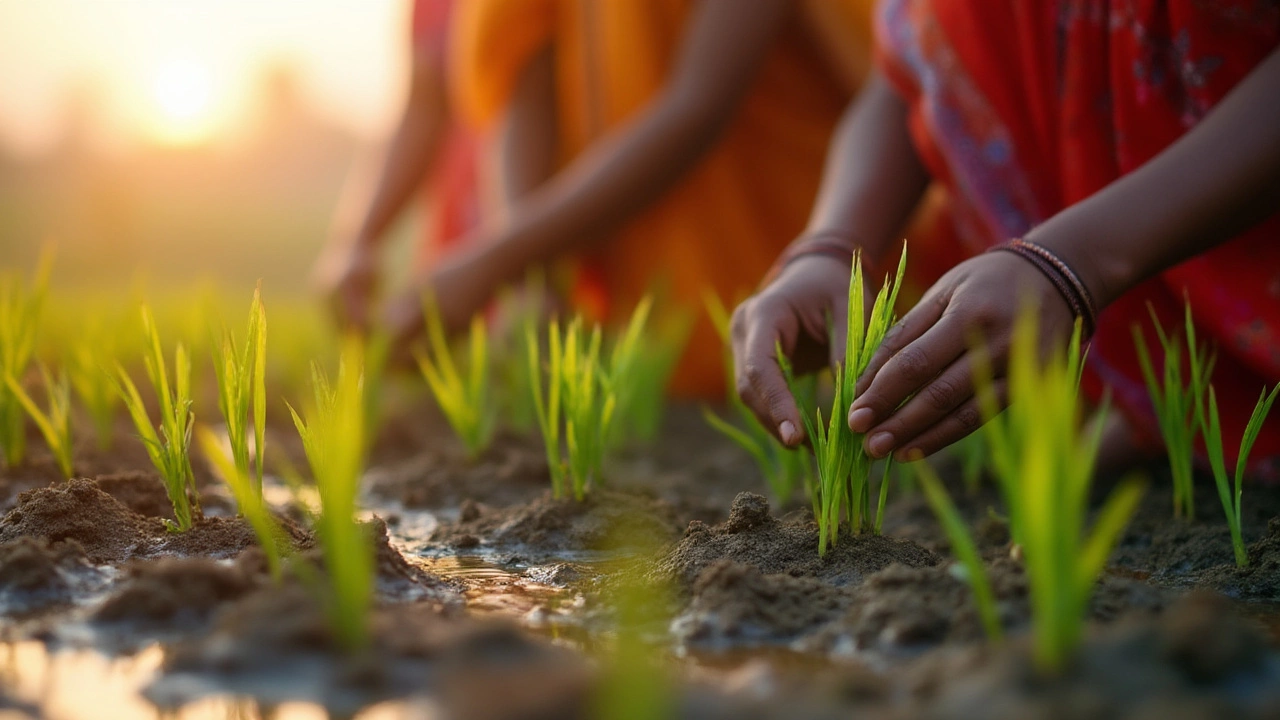Rice Farming Tips for Indian Growers
Thinking about growing rice in India? You’re not alone. Millions of families rely on this crop, and a few smart moves can mean the difference between a good season and a great one. Below are straight‑forward steps you can start using right away.
Boost Your Rice Yield
First thing’s first – pick the right variety for your region. In Punjab and Haryana, high‑yield hybrids like IR64 work well, while in the east, Basmati 370 matches the climate. Once you’ve chosen, soak the seeds for 24 hours to kick‑start germination. Healthy seedlings give you a stronger stand later.
Prepare a leveled field with a gentle slope of about 2 %. This helps water spread evenly and avoids waterlogging, which can stunt growth. Use a rotavator or manual tiller to break up clods, then spread a thin layer of organic compost – about 10 kg per centare – to improve soil structure.
When the field is ready, transplant seedlings at the 25‑day stage. Space each hill about 20 cm apart, and keep rows 15 cm apart. This spacing lets each plant get enough sunlight and air, reducing the chance of fungal problems.
Avoid Common Risks in Rice Business
Water management is the biggest risk. In the monsoon, keep a buffer channel to drain excess water quickly. During dry spells, use drip irrigation or flood‑fill methods that apply water in short bursts. Monitoring soil moisture with a simple dip‑stick can save you from over‑watering.
Fertilizer timing matters too. Apply a basal dose of 60 kg N, 30 kg P₂O₅, and 30 kg K₂O per hectare before planting. Follow up with a top‑dress of 30 kg N at mid‑tillering and another 30 kg N at panicle initiation. Over‑fertilizing not only wastes money but can invite lodging.
Pests like brown planthopper and diseases such as bacterial leaf blight are common in many states. Scout fields every week. If you see more than 5 % of plants with symptoms, spray a neem‑based bio‑pesticide. Avoid chemical sprays unless the infestation is severe – they can kill beneficial insects.
When it’s time to harvest, wait until 90 % of grains turn golden and the moisture content drops to around 20 %. Cutting too early reduces grain weight, while waiting too long raises the risk of shattering. Use a sickle for small farms or a combine harvester for larger plots.
After harvest, dry the grain to 14 % moisture in the sun or a mechanical dryer. Store the dried rice in airtight jute bags or metal silos to keep pests away. Proper storage can add up to 10 % more marketable grain.
Finally, keep records of every season – variety, dates, inputs, yields, and costs. This data helps you spot trends, plan better, and negotiate better prices with traders. Many successful farmers in India credit their profits to simple record‑keeping.
Put these tips into practice and you’ll see a steadier, higher return from your rice field. Small adjustments, like timing irrigation or choosing the right seed, can pay off big time. Happy farming!
Best Soil for Rice Cultivation: Secrets to Thriving Paddies
Discover the best soil for rice cultivation, how it affects growth, and tips to improve your own rice field no matter where you live. Detailed guide inside.
How Deep to Plant Rice: Best Depths, Mistakes, and Expert Tips
Planting rice at the right depth might sound simple, but it's key for healthy crops. Find out the science behind the best rice planting depth and get hands-on advice for perfect results.
About
Rice Cultivation
Latest Posts


How to Safely Stabilize Sloped Soil for Terrace Gardening
By Alden Thorne Mar 9, 2025

Broccoli Farming in India: Profit Secrets, Tips, and Market Dynamics
By Alden Thorne Aug 7, 2025

Are Carrots Native to India? History, Origins, and Surprising Facts
By Alden Thorne Jun 27, 2025


